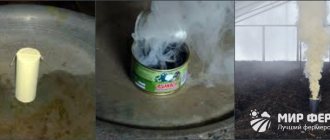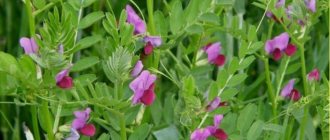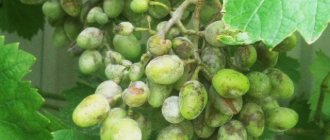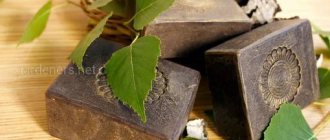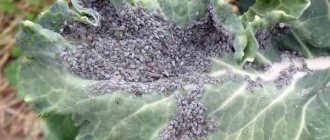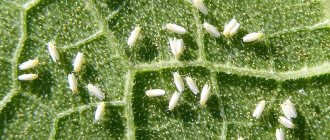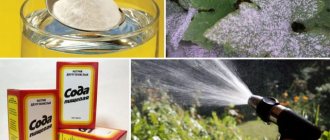White aphids are soft-bodied insects with a wide abdomen that damage house flowers. The size of the body together with the head does not exceed 1 mm, and the antennae can be twice as long. Aphids damage plants by sucking juice from leaves and young shoots. Individual insects are clearly visible to the naked eye; they are colored black, pink, yellowish or light green. With any number of aphids on indoor flowers, you can get rid of them in several ways.
Sources and signs of infection
Often aphids enter the house on the clothes and shoes of residents when they return from the garden or dacha. Another option is with purchased flowers, from where insects can easily move onto any vegetation that is in the room. After purchasing a home flower or shrub, it is recommended to quarantine it, and before that you need to do the following:
- rinse the entire plant;
- disinfect the container;
- change the soil.
Adult flying insects enter the room through windows, vents and doors, and then find indoor flowers and lay eggs on them.
After some time, the owners have to be perplexed, because whole colonies of sucking pests suddenly appear on the leaves.
In the summer, aphids crawl into flower pots placed in the yard, terrace or veranda. In a few days, the colony can cover the entire plant. Ants often become carriers of aphids. They eat honeydew, which is secreted by sucking insects, and then the aphids stick to the body of the ants along with the sweet liquid and end up on other flowers.
It is enough to examine an indoor flower or shrub to understand that it is infested with pests. Aphids are clearly visible, and before they appear, oblong eggs can be seen on the underside of the leaves, especially between the petioles. They are usually located in groups of several. But there are species of aphids in which the young generation is not hatched from eggs, but is born as fully formed insects. If there is no masonry, you need to carefully examine the flower. The following signs should alert you:
- leaf blades, petioles and shoots are covered with traces of a waxy liquid - honeydew;
- the buds do not open, wither and fall off;
- the leaves become stained, curl, turn yellow and fall off.
The sticky liquid secreted by aphids is similar to that produced by other pests, for example, whitefly larvae, scale insects, thrips, and mealybugs. To choose the right treatment method, you need to evaluate the condition of the flower comprehensively, and not based on one symptom, and you will also have to remember what events preceded the disease. For example, before this, the owners of the house went to the country, bought a new plant, had windows open for a long time, etc.
Danger of sucking pest
When settling on a plant, aphids suck the juices out of it, and because of this, the flower gradually withers. Sick specimens look as if they are simultaneously lacking moisture, light and nutrition. If they are not cured in time, the shoots and main stems become bent, all parts of the plant become deformed, and then dry out. Sick specimens look more ugly than beautiful.
Sticky honeydew is a favorable environment for sooty fungus, which is the causative agent of dangerous infectious diseases. A weakened plant is less resistant to pathogens of all types. Having noticed white aphids on indoor plants, you need to fight them immediately - this pest by itself will not go away. Crops for which sucking insects are most dangerous:
- zygocactus (“Decembrist”);
- chrysanthemums;
- begonia;
- common primrose;
- large leaf hydrangea;
- calla (calla lily);
- Persian and European cyclamens;
- Saintpaulia;
- pelargonium (geranium).
Traditional methods of killing aphids
The most powerful medicine is prepared from celandine. It is better to use not the pharmacy one, but the one that grows in the yard. You need to put 150 dried or 300 fresh raw materials into a jar and pour 1 liter of water into it. After a day, strain and spray the affected specimens with the infusion. Store unused product in the refrigerator.
Another way to remove the pest is by spraying with a strong infusion of bittersweet. Place 50 g of dried herb in a liter jar, add warm water and leave for 24 hours. Before spraying, filter and add 3 tbsp. l. crushed laundry soap. A combined aphid remedy can be prepared according to the following recipe:
- 80 g of dried yarrow pour 500 ml of boiling water;
- Brew 100 dry nettle leaves in the same amount of boiling water;
- Grind fresh Datura flowers into a paste and mix with laundry soap shavings;
- Strain the first 2 infusions, combine and add a mixture of dope and soap;
- stir, wait until the soap shavings dissolve;
- strain and use for spraying.
Herbal remedies
If you have dried lemon, orange or tangerine peels at home, they can be used to control the pest. Add 100 peels to 1 liter of water and place the container close to the battery for 3 days. Strain and generously treat the affected specimens; you can even wipe the leaves and stems with a rag soaked in the infusion.
When the aphids have already formed a colony, a decoction of tomato tops , chopped garlic and onion peel will help remove it. All components are poured with boiling water, wrapped and left to cool. The mixture turns out to be spicy, so you need to spray it no more than once every 5-6 days. Usually all aphids die after several treatments. The course of treatment is 3 weeks.
An infusion of dried spruce or pine needles will help if there are few pests. Place 25 g of needles in 1 liter of water and leave in a warm place for 7 days. Then filter, add another 2 liters of water and spray once every 3 days.
Aphids cannot tolerate the smell of marigolds and dandelions, so they can also be used to treat indoor flowers. The easiest way is to place a pot of marigolds next to the infected plant. But such a measure may not help. It is better to collect the leaves and buds, dry them, put a handful of raw materials in 750 ml of water and leave for 2 days. Then add 20 g of crushed soap, wait until it dissolves, and process the greens. Repeat several times at intervals of 24 hours.
All parts of the dandelion are used, including the roots. The collected raw materials are washed, finely chopped and poured with boiling water at the rate of 1 liter per 50 g of greens. After 2 hours, strain and spray. After 12 hours, the procedure is repeated.
Non-standard methods
Most pests will die if you spray the flower with a decoction of hot pepper . It is prepared like this: chop a few peppercorns, add 1 liter of water, boil for 10-15 minutes and leave for 1-2 days. Before use, dilute with water in a ratio of 1:50, otherwise burns will appear on the plants. If the first spraying does not help, the concentration can be increased slightly. To make the solution stick better, add soap.
Flowers with dense leaves can be treated with tobacco smoke. The method must be used with caution, because there is a risk of destroying the flower. The fight against aphids is as follows: put a bag on the plant, blow smoke inside, tie the ends and leave it overnight. By morning there will be dead insects on the leaves. Severely affected parts should be cut off, and the rest should be washed with warm water. Dead insects will fall off and can be removed.
Garlic and onion infusion helps not only against aphids, but also against spider mites. For 1 liter of water, take 1 medium or 2 small onions, chopped in a blender or grated, soaked for a day, then filtered and sprayed. You need to take only 30 g of garlic for the same amount of water.
If you find 5-6 aphids on the leaves, you should try to save the flowers with wood ash. Pour 2 tbsp into a liter jar. l. sifted substance, pour water, dissolve 30 g of soap.
Spray by hand, with a brush or brush, because ash particles can clog the sprayer.
In advanced cases, mustard powder made from seeds helps. 10 g of powder is diluted in a liter of water, left for a day, strained and sprayed on the leaves. To treat tender plants, prepare a weaker solution by adding water to the original liquid in a 1:1 ratio.
An effective decoction that helps get rid of aphids on indoor plants is prepared from fresh scales. It is mixed with chopped onions in arbitrary proportions, filled with water, filtered after 5 hours and sprayed on the affected crops. You can also make a decoction of tomato tops. About 300 g of leaves and stems are finely chopped, pour 1 liter of water and boil for 3-4 minutes. For better adhesion, soap is added, after which both sick and healthy specimens are treated.
Some gardeners protect their indoor gardens with the help of entomophates. These include aphidius, lysiphlebus, gall midge. Predators are bought in specialized stores, brought home and placed on diseased plants. When all the aphids have been eaten, the flowers are washed first with a soap solution and then with running warm water. It is advisable to transplant them into new pots and throw away the old soil away from the house.
How to get rid of pests on indoor flowers?
To combat aphids on indoor plants, both industrial preparations and folk remedies are used.
Chemicals
Fitoverm
A completely safe drug for humans, made from waste products of microorganisms. Fitoverm does not require removing plants from the premises .
The biological product has a detrimental effect on pests, but does not accumulate in plant tissues. It acts both contactally when sprayed onto the surface of the body of insects, and when ingested through the intestines while eating treated plants.
After 10-15 hours, aphids lose their ability to feed. To consolidate the result, it is recommended to repeat the procedure after 5-7 days. Fitoverm works more effectively in a warm and dry room .
Aktara
This is a moderately dangerous product for humans; gloves must be worn when using the drug.
To prepare a solution, mix 8 g of the active substance with a liter of liquid. During processing, take the flowers out onto the balcony or street.
Aktar can be used when watering or spraying plants . The drug penetrates the body of insects, causing paralysis and death. After three weeks, you need to treat the flowers again to consolidate the result.
Aktara is addictive; the drug should be alternated with other insecticides.
We invite you to watch a video about how actara is used to combat aphids:
Aktellik
An effective product that begins to work when sprayed. Actellik kills aphids in one application .
Actellik is a non-systemic drug that acts only upon contact with insects and does not penetrate plant tissue. The effect of the product increases in warm conditions and high humidity.
For spraying, Actellik is diluted in a ratio of 2 ml per liter of water. Actellik is toxic and should not be sprayed in the presence of animals or children. It is necessary to wear gloves and a mask, carry out treatment only on the balcony or street and avoid contact with skin.
Homemade remedies
- Red pepper.
Pour 20 g of spices into 250 ml of boiled water.- Leave for 24 hours and boil.
- Cool the contents, strain and add soap.
- Soda and salt.
- For a liter of water you need 1 tablespoon of the product.
- Mix the mixture and spray the plant.
- Ammonia.
- Dissolve 5 ml of ammonia in a liter of water, stir, add soap.
- Spray the flower, leave for half an hour and rinse with water to avoid burns.
- Wood ash . Pour one glass of the ingredient into 5 liters of water, add 25 g of soap and leave the solution for a day.
- Cinnamon . Dilute a spoonful of cinnamon in a liter of water and treat the plant twice a day.
More information about traditional methods of combating aphids can be found here.
Chemicals
Herbal infusions and hot garlic infusions are not always effective, and then only chemicals will help get rid of aphids on home flowers. In case of repeated infection, there is no need to experiment with folk remedies; it is better to immediately use “heavy artillery.” Effective insecticides for indoor flowers, approved for use at home:
- "Inta-Vir";
- "Decis";
- "Fitoverm";
- "Confidor";
- "Aktara";
- "Karate";
- "Spark";
- "Neoron";
- "Kinmiks";
- "Agravertine";
- "Aktellik".
Before processing, you need to make sure that there are no people or animals in the house. All poisons are toxic and cannot be inhaled, so you need to work with personal protective equipment. Before work, you should read the instructions. Further actions should be as follows:
- Wipe the leaves and stems of flowers with a cloth soaked in soapy water.
- Wear gloves and protective bandage.
- Dilute the insecticide as directed on the package.
- Treat all above-ground parts, including buds, flowers, leaves, petioles, shoots, stems.
Spraying must be repeated if recommended by the manufacturer. The timing and frequency of treatments are indicated in the instructions.
If after the second spraying the aphids did not die completely or all remained alive, the drug is replaced with another one. Pests often become resistant to a particular poison.
Features of aphids
An aphid is a small insect with an oblong body, long legs, and its abdomen is wide and pointed. Most often, white aphids settle on house flowers, but there are many other species, both wingless and winged. The insect can be colored green, pink, pale yellow and black. Although aphids may differ from each other in appearance, they harm indoor flowers equally strongly. Such a pest makes a puncture in a shoot or leaf blade and sucks out plant sap, which weakens the flower.
The pest is distinguished by its ability to quickly adapt to any habitat and its incredibly fast reproduction. It forms entire colonies. Just one female is capable of laying up to 100 larvae, and each of them becomes an adult in just half a month. Winged aphids are engaged in discovering and capturing new places suitable for life and food, and the function of wingless aphids is to reproduce offspring. Most often they settle on buds and young shoots, and they can also be found on the underside of leaf blades.
Prevention measures
Despite its apparent fragility, aphids are quite tenacious insects. It is easy to crush, but when there are several hundred insects, it will not be possible to destroy them all in this way. Until aphids appear on indoor flowers, it is better to fight with the help of prevention methods. If it is not possible to keep the purchased plant in quarantine, it is advisable to wash it with a solution of potassium soap or anti-flea shampoo, make sure that there are no signs of infection, and then place it with other flowers.
Ants should not be allowed to appear in a house or apartment. They raise and care for aphid colonies. Plants should be kept warm and clean. If the leaf turns yellow, it is better to cut it off immediately. The same should be done with dried branches. Any alarming symptom is a reason to examine the bush, and if necessary, treat it. It is better to throw away a copy that is almost completely eaten. Pity will lead to the miraculously surviving insects crawling onto healthy flowers.
Purchased pots and equipment must be disinfected. When you come from the garden, it is better to immediately change into clean clothes and send the clothes you take off to the wash, because they may have pests on them. It is enough to wash the shoes and wipe them from the inside. These are simple recommendations for protecting green pets from uninvited guests.
How to get rid of white aphids
The fight against it is the same as with any other type. There are many means and methods for this. Almost all of them give excellent results and destroy aphids on raspberries, grapes, tomatoes, plums and most other plants without spending much money and time.
Chemicals
To combat white aphids, a separate group of pesticides has been developed - insecticides. The principle of operation is different for everyone and is conventionally divided into systemic and contact. The first is more lethal, but has a somewhat delayed effect, the second depends on the duration of exposure of the substance to the insect. The most popular are:
- "Fitoverm".
Available in 2, 4, 10 ml and 5 l. Contains the substance aversectin, obtained from a certain type of soil fungus and affecting the nervous system of the individual. - "Aktara".
Helps protect plants from aphids using thiamethoxam. It can be purchased in the form of soluble granules and suspension. The resulting solution is sprayed on infected plants. - "Metaphos".
Treatment with the solution is carried out in calm weather. The advantage of the drug is its long-lasting effect.
